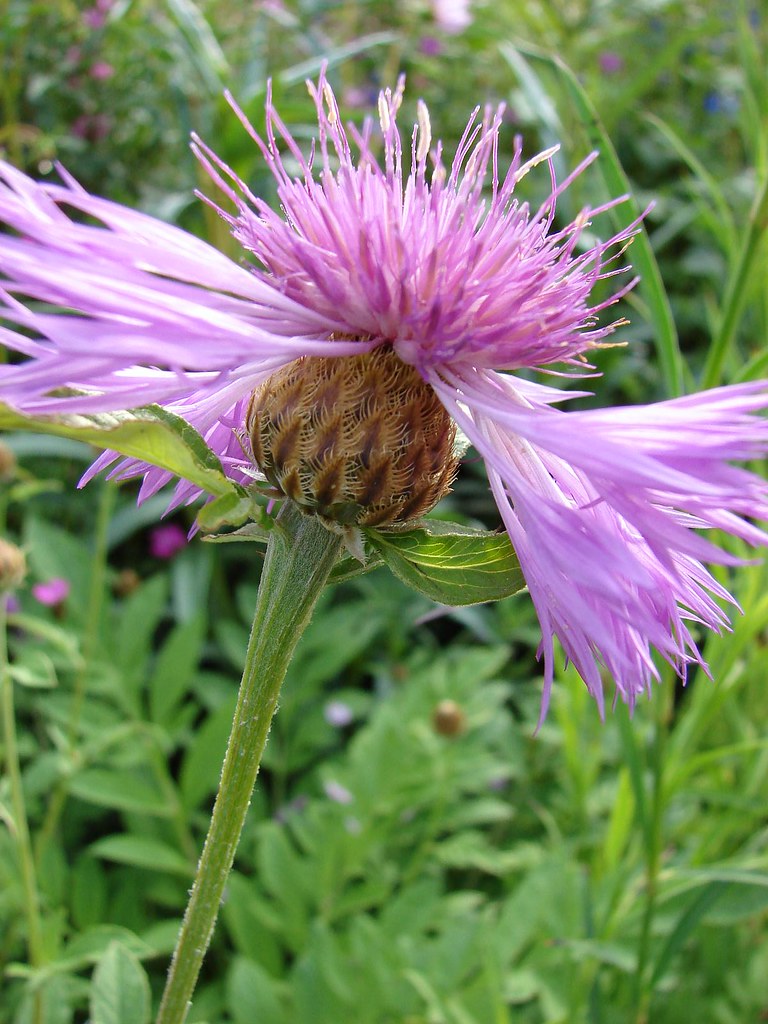Meadow Knapweed

Meadow Knapweed
(Centaurea pratensis)
Priority: - Established / Strategic Control
Tags: Agricultural | Biocontrol
Identification and Reproduction
Identification:
- Meadow knapweed is a hybrid species between black knapweed (C. nigra) and brown knapweed (C. jacea). Therefore, its characteristics will have a variable range.
- Its stem grows up right and can be slightly branched. It can grow from 30 to 150 cm in height.
- It grows from a taproot and will develop a woody crown.
- Leaves are oblanceolate growing from a leaf stalk that attaches to the stem. Moving up the stem leaves will decrease in size and lose its stalk.
- Flowers occur at the end of stems. They range from purple to pink, rarely white. Flowers are showy and broad.
- Flowerheads are the size of a nickel and will be encased by bracts that are evenly fringed and brown in colour. When mature the bracts will appear papery gold.
Reproduction:
This plant primarily reproduces by seed but will also regrow from stem and root fragments.
Habitat & Ecology
This plant grows in a variety of habitats, ranging from pastures, meadows, roadsides, riparian areas, forest edges, clearcuts and industrial sites
Impacts
Social:
- Seeds can contaminate agricultural seed crops.
- Infestations can suppress the growth of crops and forage availability for livestock.
- Can minimize silvicultural reforestation efforts on forest lands and plantations.
Ecological:
- Out-compete native vegetation.
Management
Prevention is a high priority for this plant.
Mechanical/Manual Control:
- Digging or hand-pulling may be effective if entire root systems are removed.
- Avoid mowing as this will disperse stem fragments and stimulate regrowth.
Chemical Control:
- Selective broadleaf herbicides such as aminopyralid and clopyralid are the most effective. It is suggested to use herbicides on larger infestations.
- For optimal treatment usage, apply when plants are transitioning from rosette to bolting stage.
- Please carefully read labels prior to application.
Biological Control:
- Like many knapweed species, meadow knapweed has seen success with some bio-controls.
- There has been some success with a fly, weevil and a moth that help suppress plant growth.
Resources
For more details check out the Invasive Species Compendium datasheet on Centaurea debeauxii (meadow knapweed).
Header photo (Doug Murphy).




